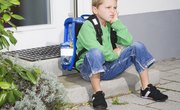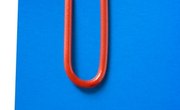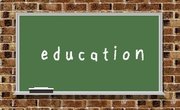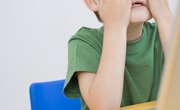Creating an individualized education program -- or IEP -- helps the student with attention deficit hyperactivity disorder to reach learning goals. Within the IEP, goals are statements that the teacher can measure. These include expectations for how the student's behaviors will change and what he will learn over the school year. Goals for ADHD students on an IEP must be tailored to the student’s current level of functioning and unique needs. Assist parents in understanding and asserting their legal right to participate in formulating and reviewing their child’s education plan.
Include Specific Steps for Behaviors
Goals for ADHD students on an IEP should clearly identify the consequences that students can expect for acting out, not paying attention or chatting with other students during class. Each negative behavior is a sign that the student needs instructional help. The objectives that you set create steps to reach the specific goals. For example, the student has difficulty focusing during direct instruction. The goal you create is, "She will focus on class time." The steps to reach this goal should reflect the individual student's needs and abilities. This may include building the skills to gradually focus by breaking up tasks into manageable periods or it may state the consequences for forgetting assignments at home.
Develop Plan to Increase Attention
IEP goals for ADHD inattentive students can significantly improve behavior and support academic success. The inability to pay attention for extended periods is a major challenge for most ADHD students. Daydreaming during class and then asking for help later affects the student's ability to learn as well as the teacher's ability to work as an effective educator. Inattention may also lead to behaviors such as talking out of turn or interrupting a class activity. These actions get in the way of the other students' learning. Build in goals and objectives that help the student to pay attention and focus on the lesson. For instance, IEP goals for ADHD inattentive behavior might state, “The student will refrain from talking out loud while the teacher is talking" with objectives such as, "He will use relaxation techniques to quiet himself" or, "He will use a physical movement strategy during class time, such as walking to the pencil sharpener and back to his desk." Continually assess and modify IEP goals for ADHD inattentive behaviors as needed.
Set IEP Goals for Organization
Although the student's behavior needs correction during the school day, the IEP should also address skill development, particularly IEP goals for better organization. Students who are disorganized struggle to reach their academic goals and objectives. IEP goals for organization should include specific subjects such as setting aside time each evening to work on reading or mathematics. Teach problem-solving skills by collaborating with the student to get goals for improving organization through practicing planning and time management strategies. Organizational goals within the IEP shouldn't look the same as the ones that are set for other students. Instead, these should focus on each student's problem areas. The IEP should identify the student's academic needs in relation to her specific ADHD symptoms. Create milestone markers that designate what and when the students will learn. The objectives may also include the use of adaptations to meet the goals. For example, "The student will quickly locate and use his calculator to re-check math problems."
Address Social and Emotional Challenges
The student's disruptive behaviors and inability to control himself at times may get in the way of his social functioning within the classroom. Goals for ADHD students on an IEP should include emotional and social goals to correct or change inappropriate behaviors. Setting goals may help the student gain emotional control and become part of the classroom social scene. For example, set a goal that the student will express feelings of frustration in an acceptable way. The objectives for this goal may include using his words to communicate his feelings or identifying other classmates' feelings instead of starting a fight or crying.
Related Articles
References
- National Association of Special Education Teachers: How to Determine Measurable Annual Goals in an IEP
- ADDitude: What Is an IEP? Writing an IEP That Works
- National Association of School Psychologists: Strategies for Teachers
- National Institute of Mental Health: What is Attention Deficit Hyperactivity Disorder (ADHD, ADD)?
- Understood: Legal FAQs About IEP Meetings
Writer Bio
Based in Pittsburgh, Erica Loop has been writing education, child development and parenting articles since 2009. Her articles have appeared in "Pittsburgh Parent Magazine" and the website PBS Parents. She has a Master of Science in applied developmental psychology from the University of Pittsburgh's School of Education.











